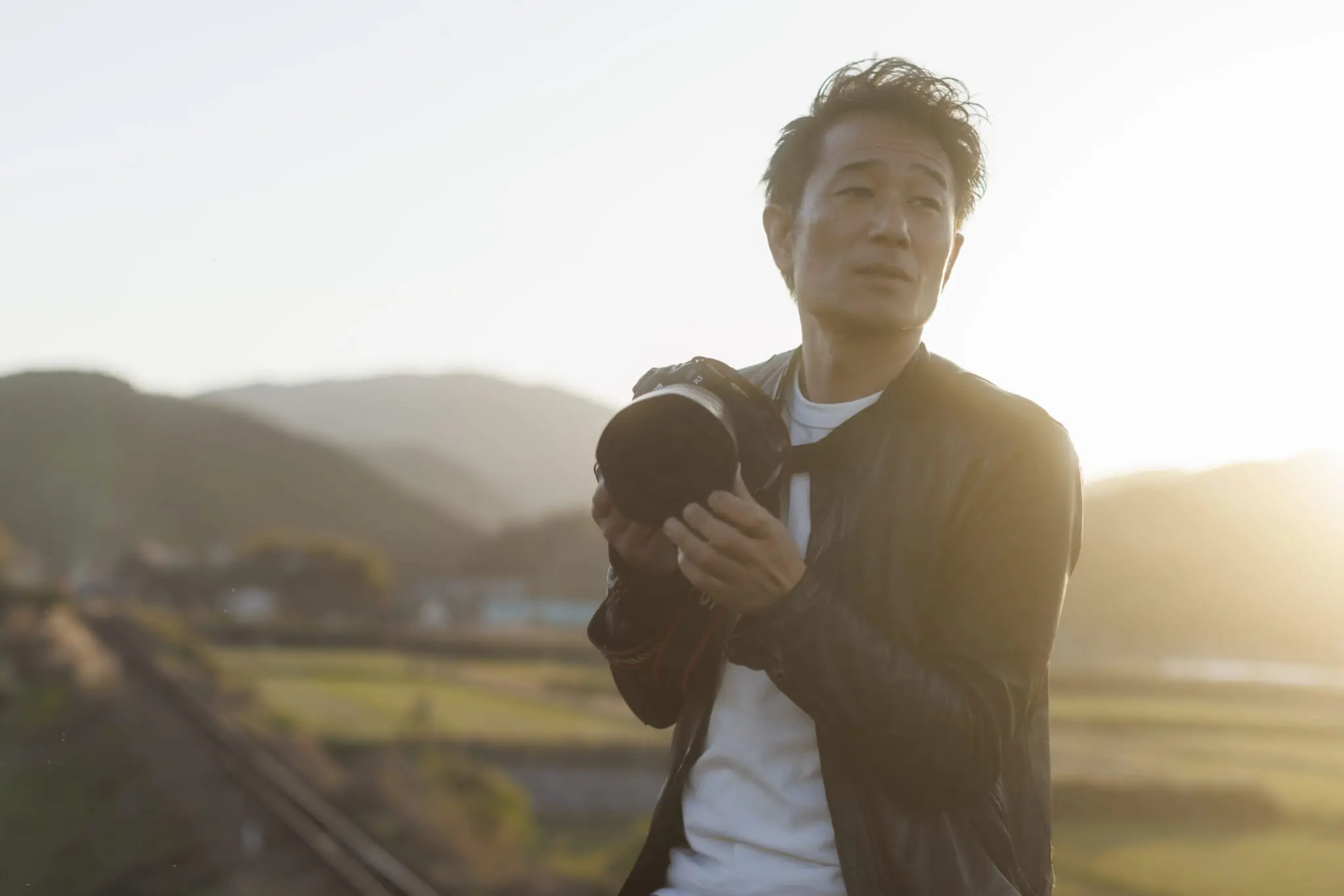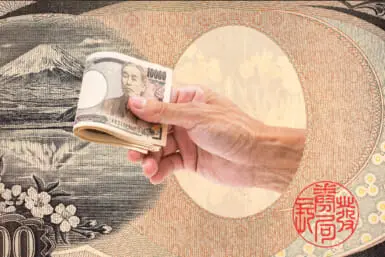It takes dogged determination to be a train photographer. Or at least the kind who can capture in an image what Hirokazu Fukushima calls the “essence” of a railway journey. Fukushima is an authority on the subject. Over his prolific career spanning nearly two decades, the 48-year-old Fukuoka native has shot hundreds of assignments – for railway advertisements and magazine spreads, tourism posters and websites – aboard trains and along tracks all over Japan.
Today, Fukushima, a freelancer, is the go-to photographer for Fukuoka-based Kyushu Railway Company (JR Kyushu), a regional rail operator that’s one of the industry’s most innovative. Rarely is the essence that Fukushima is looking for, or the environment where he’s shooting, the same.
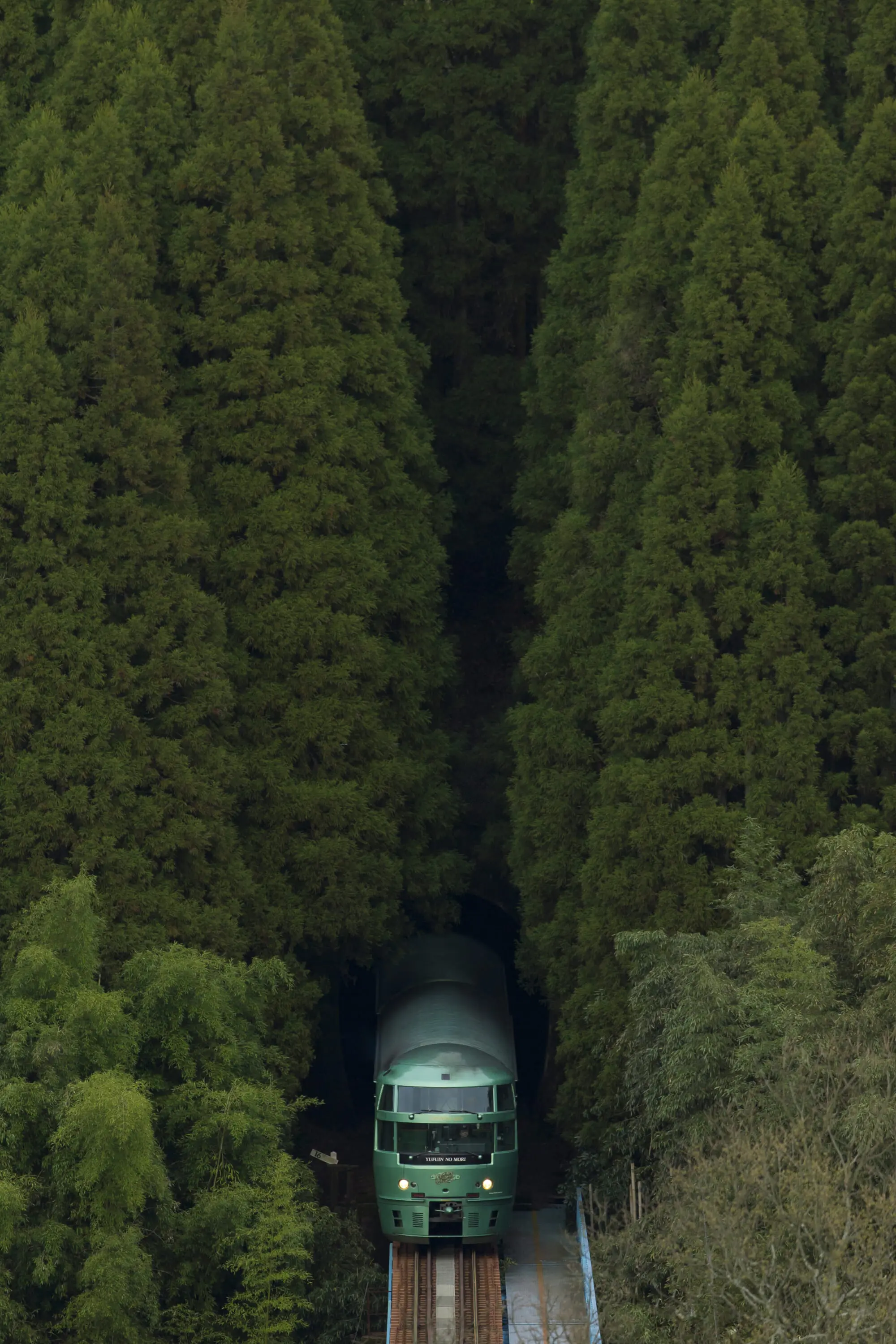
Yufuin-no-mori, Oita Prefecture
Much depends on the train, the season and the scenery. Fukushima might fill the frame with the Yufuin-no-Mori’s bulbous front car exiting a bamboo forest – green against green – or the Kyushu Shinkansen barreling through the year’s first snowfall. But he’s just as likely to focus on the backdrop of the journey. He shot the mustard-colored Aru Ressha train, as a small, distant object, beyond a big, bright yellow blur of spring wildflowers. He showed the coastal Omura Line’s two-car train off to one side, rounding a bend above the ocean in the fading light of dusk. His images taken from inside of trains depict the everyday of students commuting to school, interior details of artisanal kumiko woodwork and glimpses of rice fields and mountains through blurred window frames.
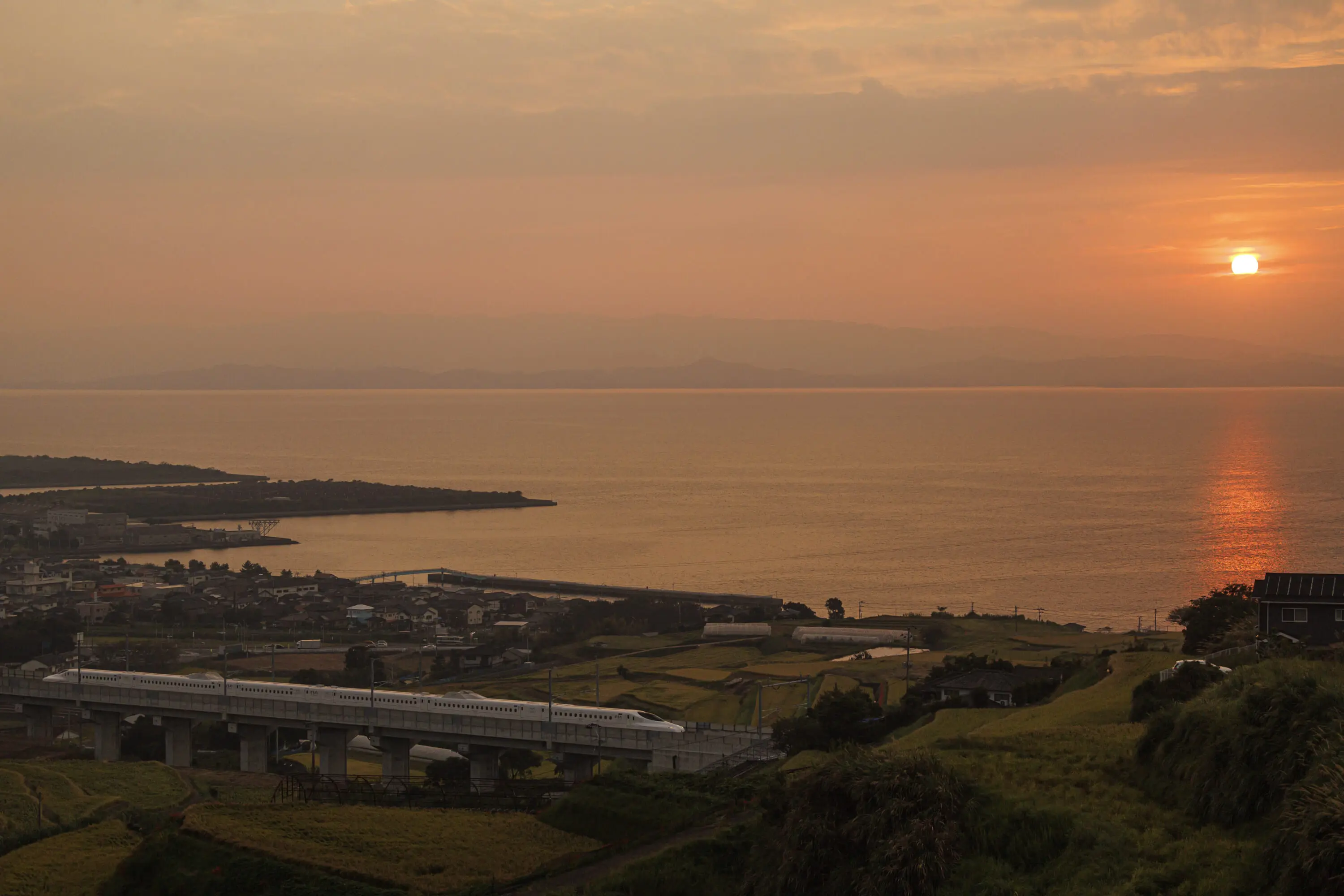
Nishi Kyushu Shinkansen Kamome, Nagasaki Prefecture
Preparation and Patience
To get images that will draw people in, Fukushima spends a good deal of time on reconnaissance work. He has to familiarize himself with the routes and lay of the land. He studies maps and pores over train timetables. Scouting out vantage points and anticipating where the light will fall and how everything will look are essential.
But even with the most thorough preparations, plenty can go wrong on a shoot. A few years ago, Fukushima was hired to work on promotional materials for the Seven Stars in Kyushu, JR Kyushu’s seven-car luxury sleeper train, with 10 elaborately furnished suites, a lounge and Japanese tea room. He wanted the quintessential Kyushu backdrop and knew the perfect place to get it: Aso Station, near Aso-Kuju National Park.
“The Seven Stars arrives at Aso Station at exactly 6 am,” Fukushima said. “Just before it arrives, it passes by a hill where you can see the five peaks of Mount Aso, illuminated by the morning sun.” It should have been straightforward and quick – but almost never is – and his patience paid off. “The first time it rained. The second time it was cloudy. And the third time the train was delayed and the timing was not right,” he recalled. A month later, after multiple visits, Fukushima finally managed to get the shot that he had envisioned.
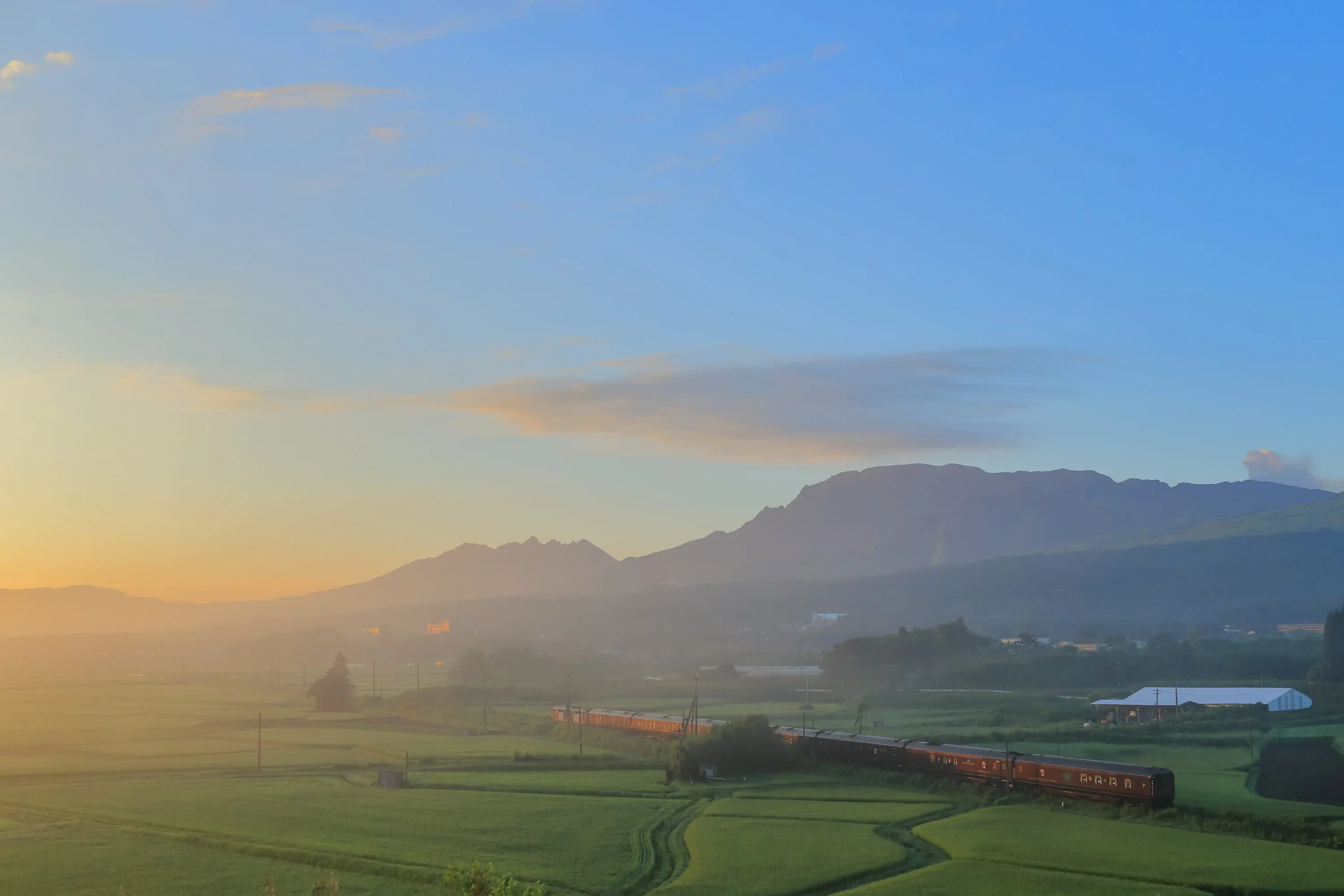
Seven Stars in Kyushu, Kumamoto Prefecture
There’s something dreamy about being a railway photographer in a country where trains command superlatives. Japan has the world’s busiest train terminus (Shinjuku Station), the fastest train (the under-construction Chuo Shinkansen maglev line) and the longest suspended monorail system (Chiba Urban Monorail), but it also has hundreds of railroad lines and tens of thousands of kilometers of tracks crisscrossing and connecting every region with somewhere else. The country’s diehard train geeks, known as densha otaku, go to extremes to ride and photograph and record the sounds of their favorite trains, and their fanaticism begins at an early age.
Fukushima admits to being one of them: He got hooked at the age of three. “When I turned five, I started using my dad’s single-lens reflex camera to take photos of trains,” he said. Riding the rails and documenting his adventures was a hobby until one day, Fukushima spotted a promotional poster for a multiple-ride train ticket, known as Seishun 18. “I immediately thought, ‘I want to take photos that will make people feel something.’”
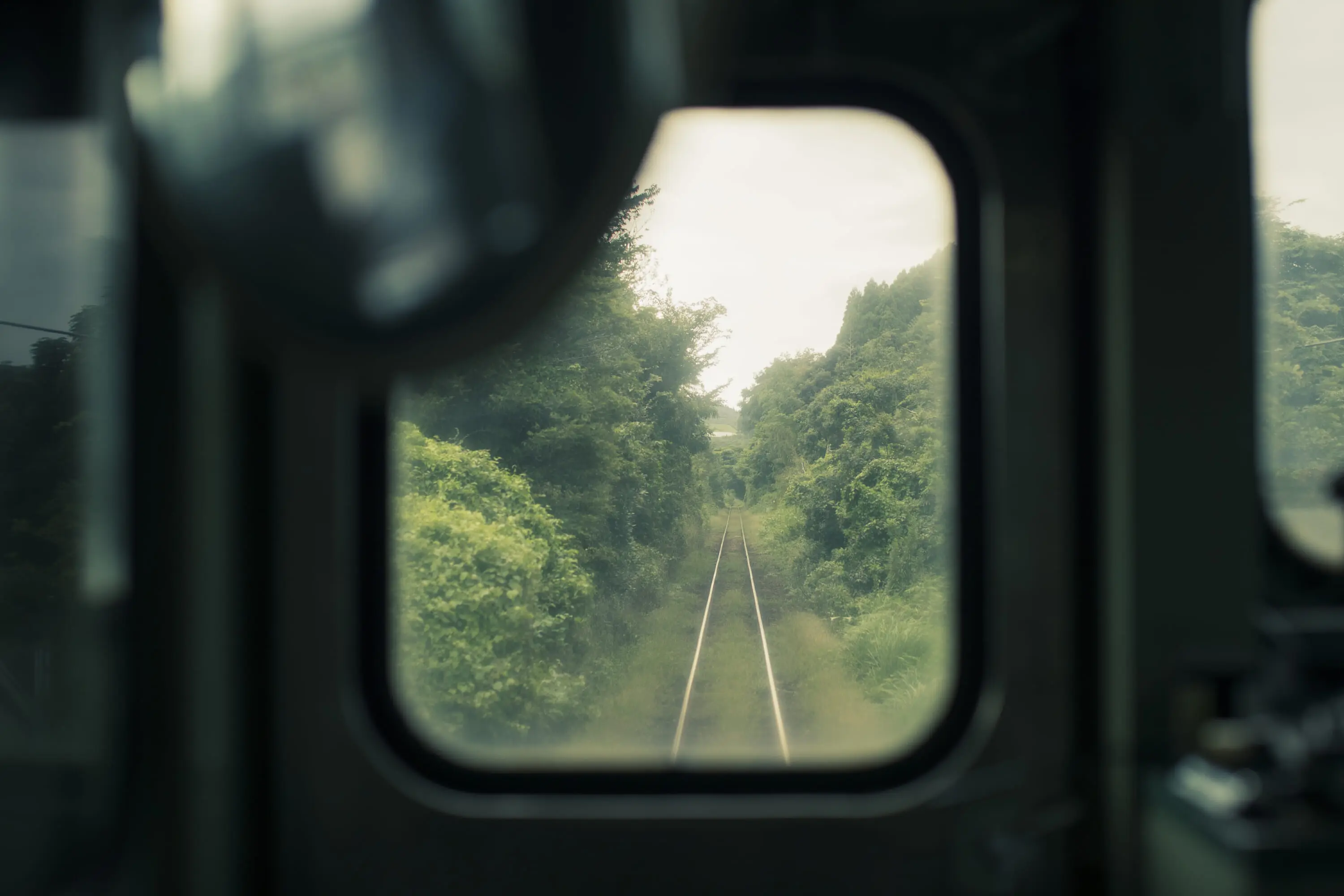
Gaining Traction
Fukushima’s first job as a photographer was with a commercial studio working on promotional campaigns. But he never stopped taking pictures of trains. Eventually, someone on JR Kyushu’s advertising team noticed Fukushima’s photos and asked to use them on posters, pamphlets and calendars. By then, he was in his 30s and ready for a change. But it wasn’t until 2013, when he signed on as a pre-launch support member for the Seven Stars in Kyushu train, that he decided to quit the studio and open his own photo agency specializing in trains.
With JR Kyushu projects, the objectives can vary. Sometimes, he’s promoting the train; other times, it’s the destination, which can be in any of Kyushu’s seven prefectures. Occasionally, it’s both. Even for a train buff like Fukushima, the job can be taxing, with shoots scheduled in the early mornings or late at night. Getting the dramatic light and backdrops is tricky when train schedules don’t align with good shooting conditions. It’s also hard when you’re trying to get a sharp, focused image of a sleeper train traveling at 100 kph or a Shinkansen zipping by at 260 kph. For Fukushima, the transition from winter to spring – when the snow is gone but the trees are still bare and flowers have yet to bloom – is the “season that tests a photographer’s ability.” “I have to read the light more carefully than usual and think hard about the composition,” he wrote in an essay for Canon Photo Circle magazine last year.
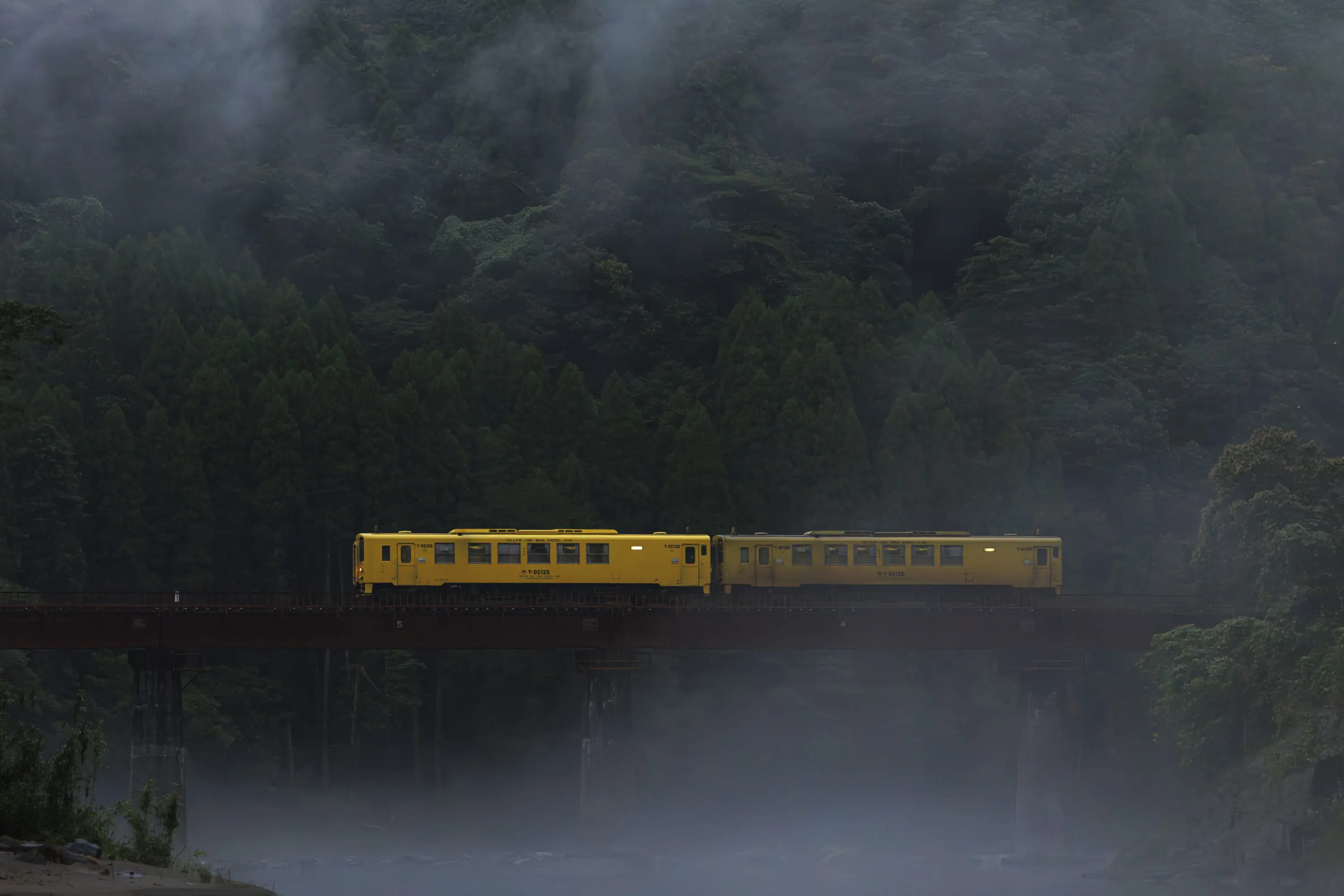
Kyudai Line, Oita Prefecture
While trying to create images that convey the enjoyment of slower rail travel, Fukushima might be sprinting to meet a deadline. At times, he’s had to set up as many as 22 remote-controlled cameras and one video camera to make the best of his only chance to get the shots he needed. Once in a while, he snaps an image that gets to the heart of how he feels about his home turf. One of his personal favorites shows the SL Hitoyoshi – a steam locomotive sightseeing train that links Kumamoto Station, in Kumamoto prefecture, to Tosu Station, in Saga prefecture – crossing the Kuma River over a bridge that was recently damaged by torrential rain. What makes the photo special are the children. “There is a nursery school next to this bridge, where children always play in the river, and they always wave to me when the SL Hitoyoshi goes by,” he said. People waving at trains is common around Kyushu – and it’s become a genuine expression of the warm hospitality that Kyushu residents, including Fukushima, are eager to show visitors.
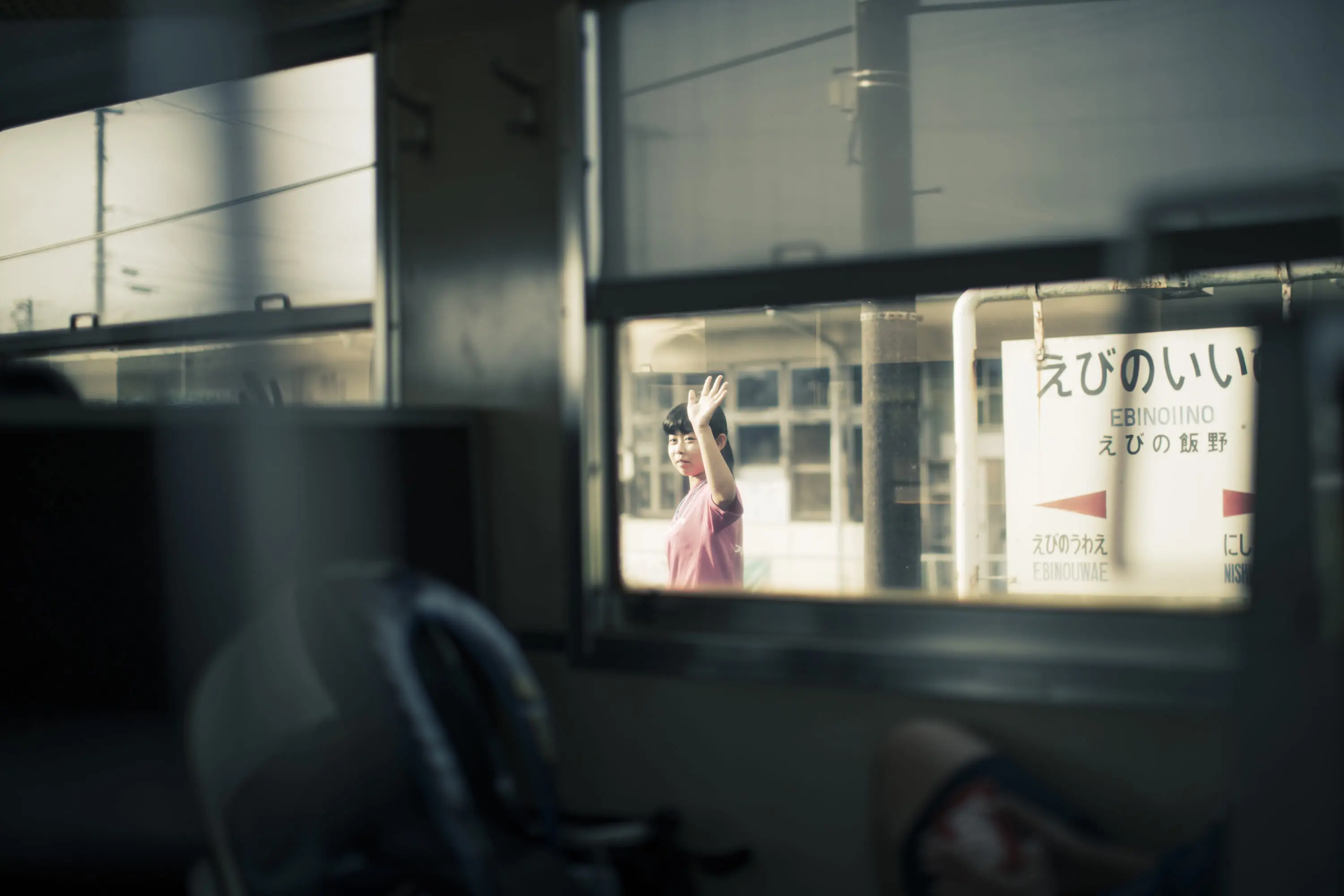
Ebinoino Station, Kitto Line, Miyazaki Prefecture
Ticket to Ride
What’s so inspiring about Japan’s trains? For one, they’re such a vital part of people’s daily lives. “Railroads only exist because of people, and thus the two are inseparable,” Fukushima explained. And seeing the uniformed railway staff go about their work with such professionalism, dedication and pride gives him a boost. “I’m always so motivated by them. They’re always engaged in their work,” he said.
Working in the industry hasn’t dampened Fukushima’s enthusiasm for trains. When he’s shooting for himself, he tends to look for quiet scenes of daily commuter life on less popular train lines around the country, rather than focusing on the high-profile trains that most people have heard of. He loves sleeper and sightseeing trains but is just as effusive about regional lines like the Sagano Romantic Train in Kyoto or the 89.3-km-long Kushiro Shitsugen Norokko in east Hokkaido. For Fukushima, nothing compares to riding a local line, staring out the window at the passing vistas. Or napping. Or sipping hot tea. Or chatting up the passengers who rely on it to get to work, school or the next town over. “It’s a great way to meet local folks,” said Fukushima.
Kyushu By Train
There are rail travel options for every budget. Here are the train lines and rail passes that shaped Hirokazu Fukushima’s career.
This article was originally published in the special issue En Route.

